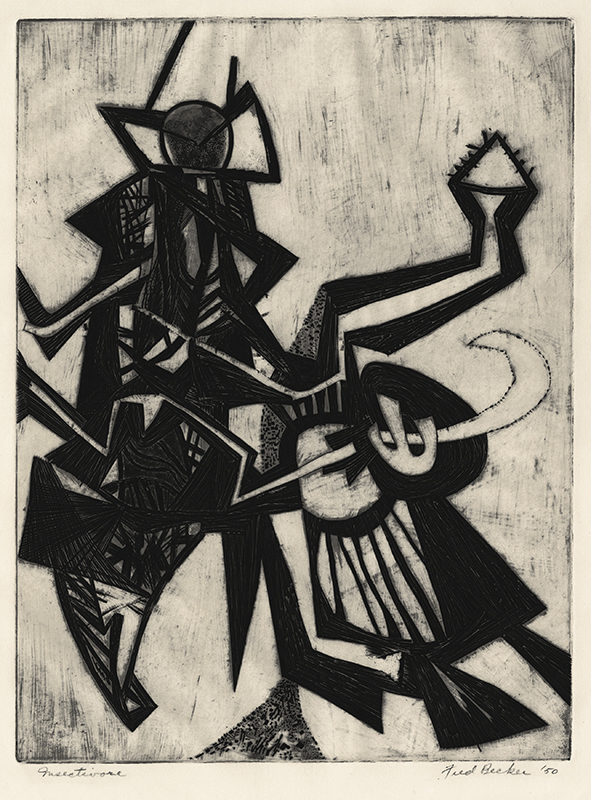
19th, 20th & 21st Century Fine Prints
707-546-7352 · fax 707-546-7924 · web: www.annexgalleries.com · email: artannex@aol.com
Insectivore by Fred G. Becker

Insectivore
Fred G. Becker
Insectivore
Fred G. Becker
1913 - 2004 (biography)The plate originally had a carborundum ground which the artist had to scrape off by hand using a specially designed tool made from a chisel. Traces of the ground are found in the circle, upper left and in the triangle, lower center and accounts for the mottled, toned background.
Fred told me he had two magnesium plates to which he had added a carborundum ground and then decided it was too hard a surface to accomplish what he wanted. He created a tool out of an old chisel and laboriously scraped most of the carborundum off. I remember him commenting that they were the most difficult plates he ever created and he never did it again. The result is an intaglio that is amazingly crisp and sure - the lines stand off the surface, the viewer is left with the feeling they are looking at a bas relief. The background is softened by subtle random lines and toning left from the inking. Fred Becker returned to the plate in 1999 when he printed a second edition of 22 on a white BFK Rives paper.
An 'insectivore' is a life form that eats insects including lizards, possums, spiders, bats, anteaters, swallows, Venus Flytraps, etc (it can include humans). They are usually nocturnal and often use stealth, deception, and sharp teeth to accomplish their aims.
Fred Becker was accepted into the Graphic Arts Division of the WPA. Becker worked in the WPA between 1935 and the day he was "laid off" of the project in the summer of 1939. An exhibition in 1937 at the Federal Art Project Gallery in New York included two of his prints and the following year his work was exhibited at the Willard Gallery in New York.
When Stanley William Hayter relocated his famous Atelier 17 to New York in 1940 as the war expanded, Becker was among the first to sign up for classes. He found there another free, informal and imaginative place to learn and work. Hayter, one of the original "Surrealist" group back in Paris, brought the surrealist concepts to the U.S., including the "automatic line." This composition, "Insectivore", was done using engraving, drawing directly on the copper plate with a graver, and soft-ground etching to create textural elements. The image explores the free-flowing dream-like surrealist symbolism of the subconscious mind.
